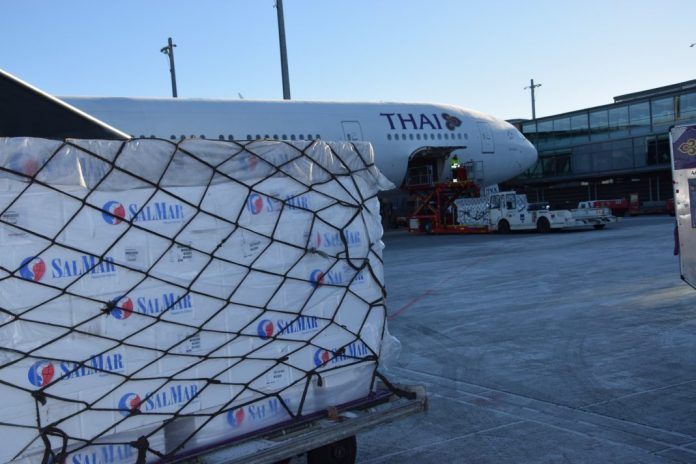Record prices into for the Christmas salmon. Especially the heaviest fish is well paid.
“There is low availability of big fish next week. The aircargo market, 6+ kg, is strong,” says an exporter to SalmonBusiness. “It is New Year’s celebration and good demand world wide.” [factbox]
Demand is particularly strong in Asia – and they prefer the largest fish.
“I think 6+ (in aircargo) can get closer to 100 kroner (€10). There are very few harvesting days, and one depends on what the Chinese are doing now,” says a sales manager at a fish farming company in Northern Norway. “The upper part of the 90s (kroner) is also available in Europe,” he says, but adds that it is far down to high volume 3-4 kg of salmon.
But not everyone believes it is possible to achieve such high prices.
“People don’t buy at 100 kroner (€10). People might buy a box. But 80 (€8)and 90 (€9) will happen,” says one exporter.
For the most clearly traded sizes, three to six kilos, there is a gap of €1-1.5. There, the average price stays largely in the between €7-8/kg.
SalmonBusiness’ industry sources refer to the following price levels, paid to farmers, for salmon to be delivered next week:
- 3-4 kg NOK 67-70 (€6.7-7.0)
- 4-5 kg NOK 70-73 (€7.0-7.3)
- 5-6 kg NOK 80-87 (€8.0-8.7)
- 6+ kg NOK 90-100 (€9.0-10.0)
This means that the prices achieved today are at a record high, and at a level that one must go back to the mid-1980s to match.
“There is little of it [the fish – ed. note]. That is why prices are so high,” explains a seller at a fish farming company in Central Norway. “There are so few days available – and then there are few flights next week,” he explains.
“We have sold individual pallets at that level earlier, but not between 100 and 200 tonnes from us. We are bothered by the fact that we do not have fish available.”
He believes prices will remain high over the New Year.
“I think it will be a rewarding first half of 2020. Not only the first but also the second quarter. And I think the forward price is too low.”

